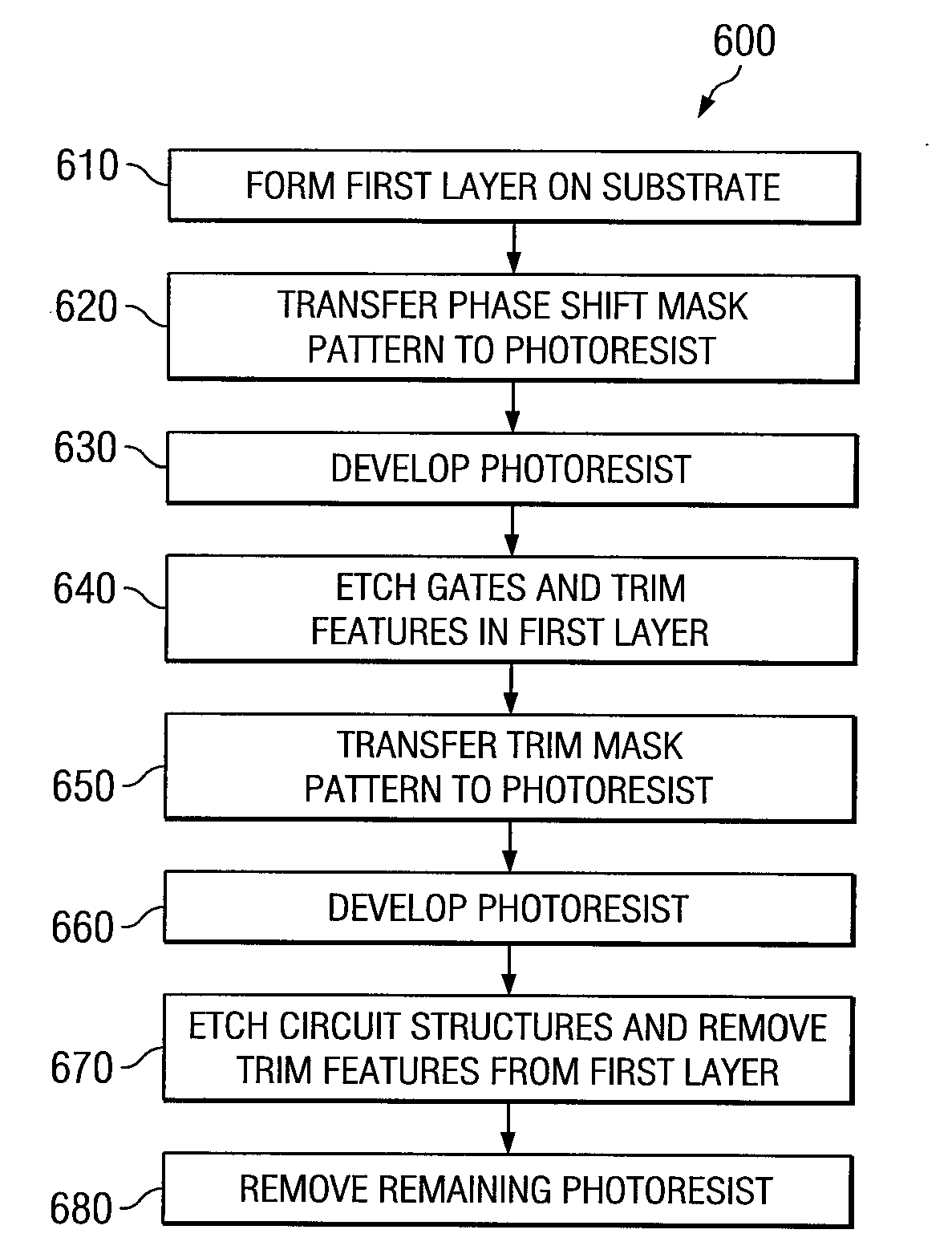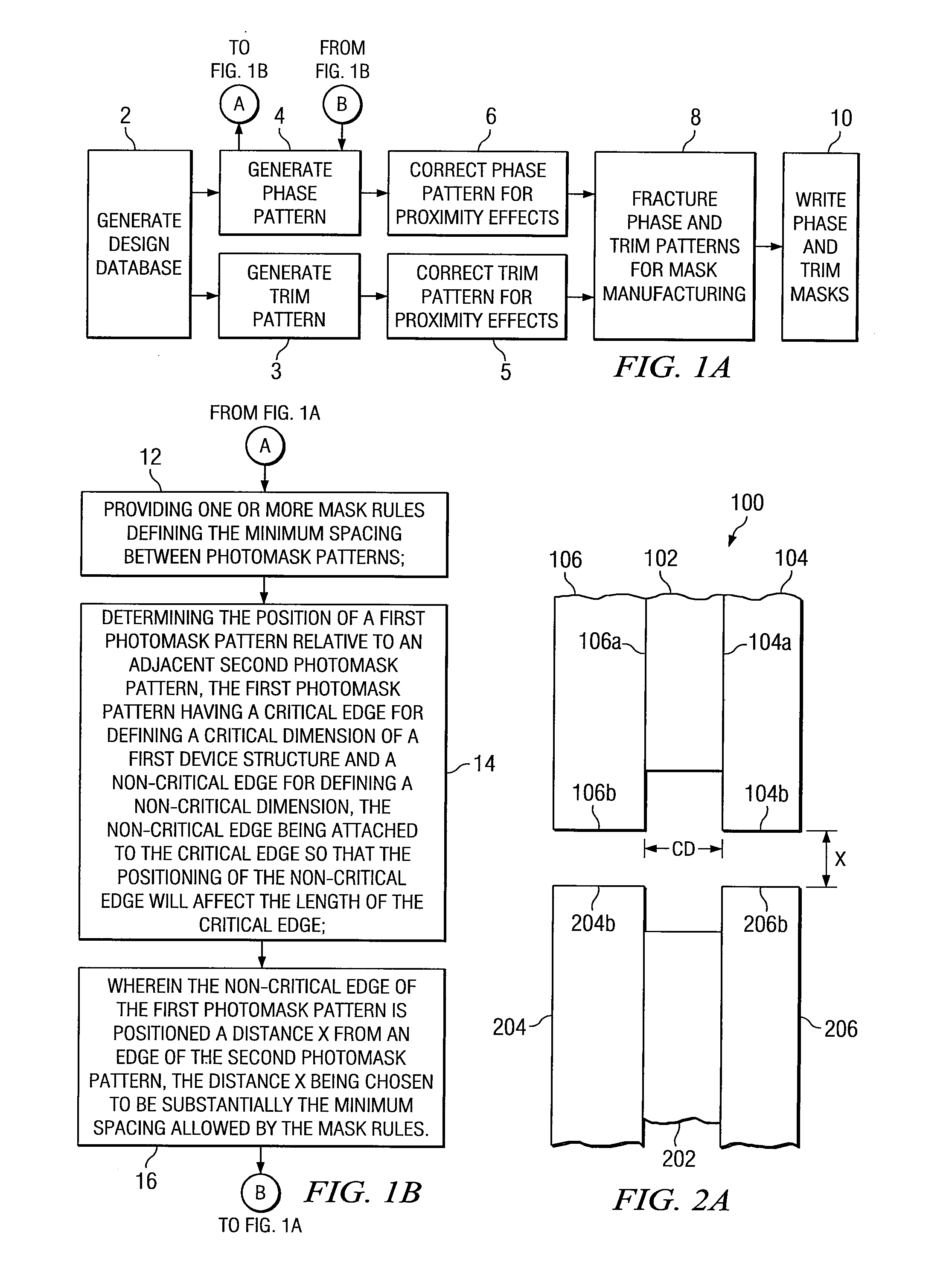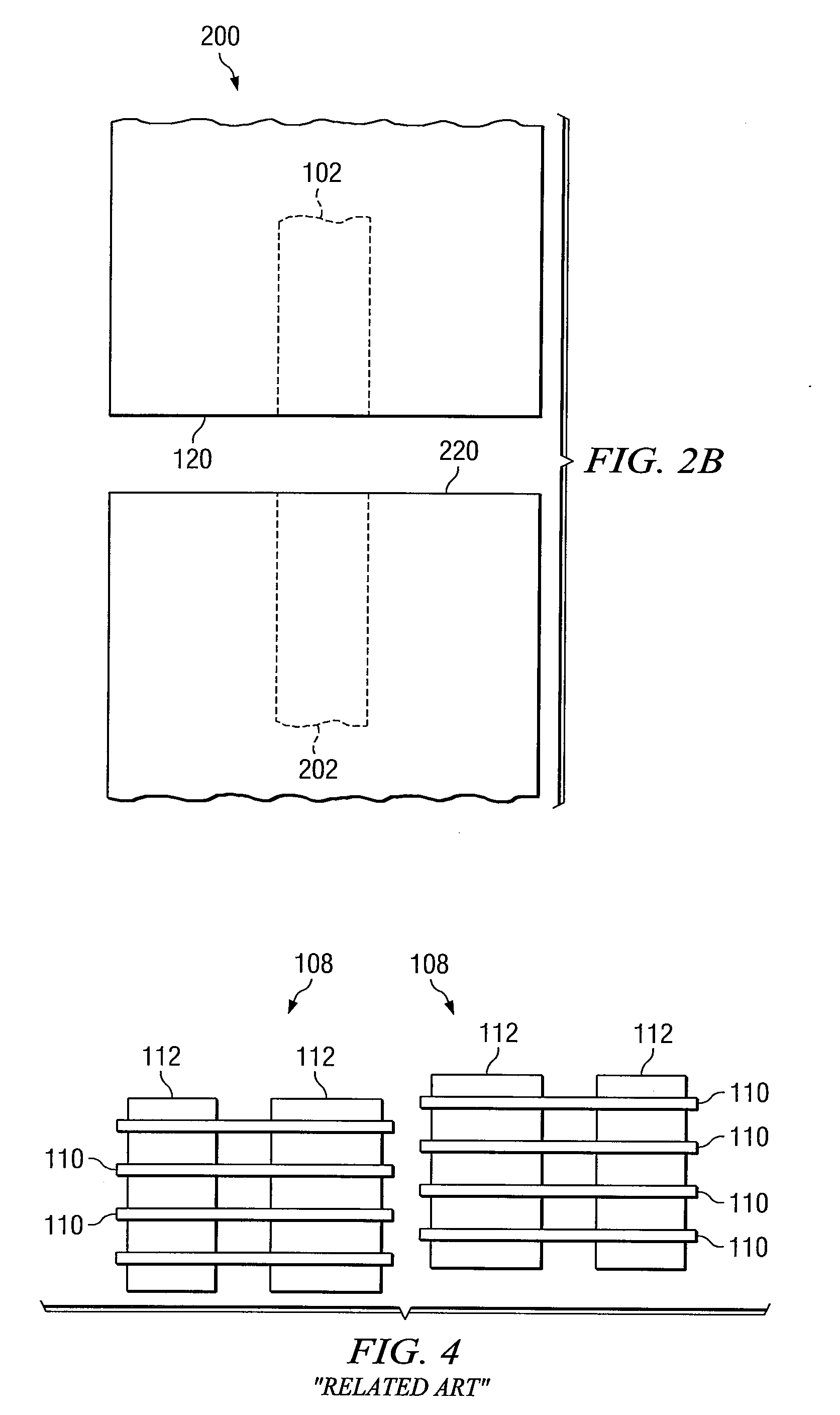System and method for making photomasks
a photomask and photomask technology, applied in the field of photolithography, can solve the problems of limiting the wave properties of lithography, and making the achievement of the desired critical dimensions extremely difficult, and achieve the effect of the critical dimensions
- Summary
- Abstract
- Description
- Claims
- Application Information
AI Technical Summary
Benefits of technology
Problems solved by technology
Method used
Image
Examples
Embodiment Construction
[0021]Reference will now be made in detail to various exemplary embodiments of the present application, examples of which are illustrated in the accompanying drawings. Wherever possible, the same reference numbers will be used throughout the drawings to refer to the same or like parts.
[0022]Photomask patterns that are used to generate photomasks generally include a plurality of polygon shaped patterns. The edges of these polygon patterns define boundaries that will be used to pattern a desired integrated circuit design to be fabricated. Every edge of the pattern can be assigned a different level of importance. Some pattern edges will be used to define critical dimensions of the integrated circuit design, such as, for example, a gate length. Other pattern edges may be used to pattern non-critical dimensions, such as interconnect widths or lengths, dummy features that are not a functional part of the device, ghost and trim features that may be subsequently removed, or gate ends formed...
PUM
 Login to View More
Login to View More Abstract
Description
Claims
Application Information
 Login to View More
Login to View More - R&D
- Intellectual Property
- Life Sciences
- Materials
- Tech Scout
- Unparalleled Data Quality
- Higher Quality Content
- 60% Fewer Hallucinations
Browse by: Latest US Patents, China's latest patents, Technical Efficacy Thesaurus, Application Domain, Technology Topic, Popular Technical Reports.
© 2025 PatSnap. All rights reserved.Legal|Privacy policy|Modern Slavery Act Transparency Statement|Sitemap|About US| Contact US: help@patsnap.com



